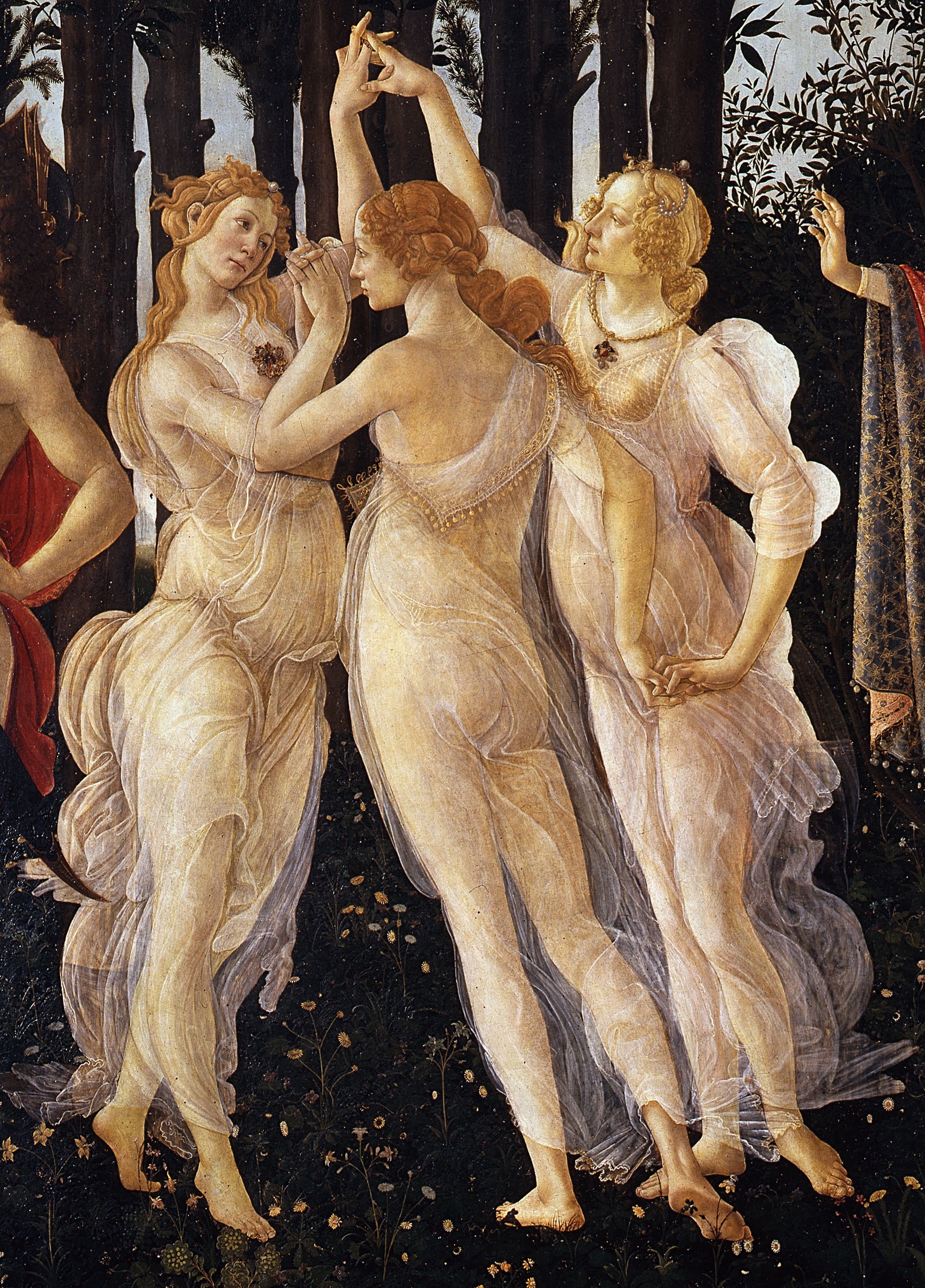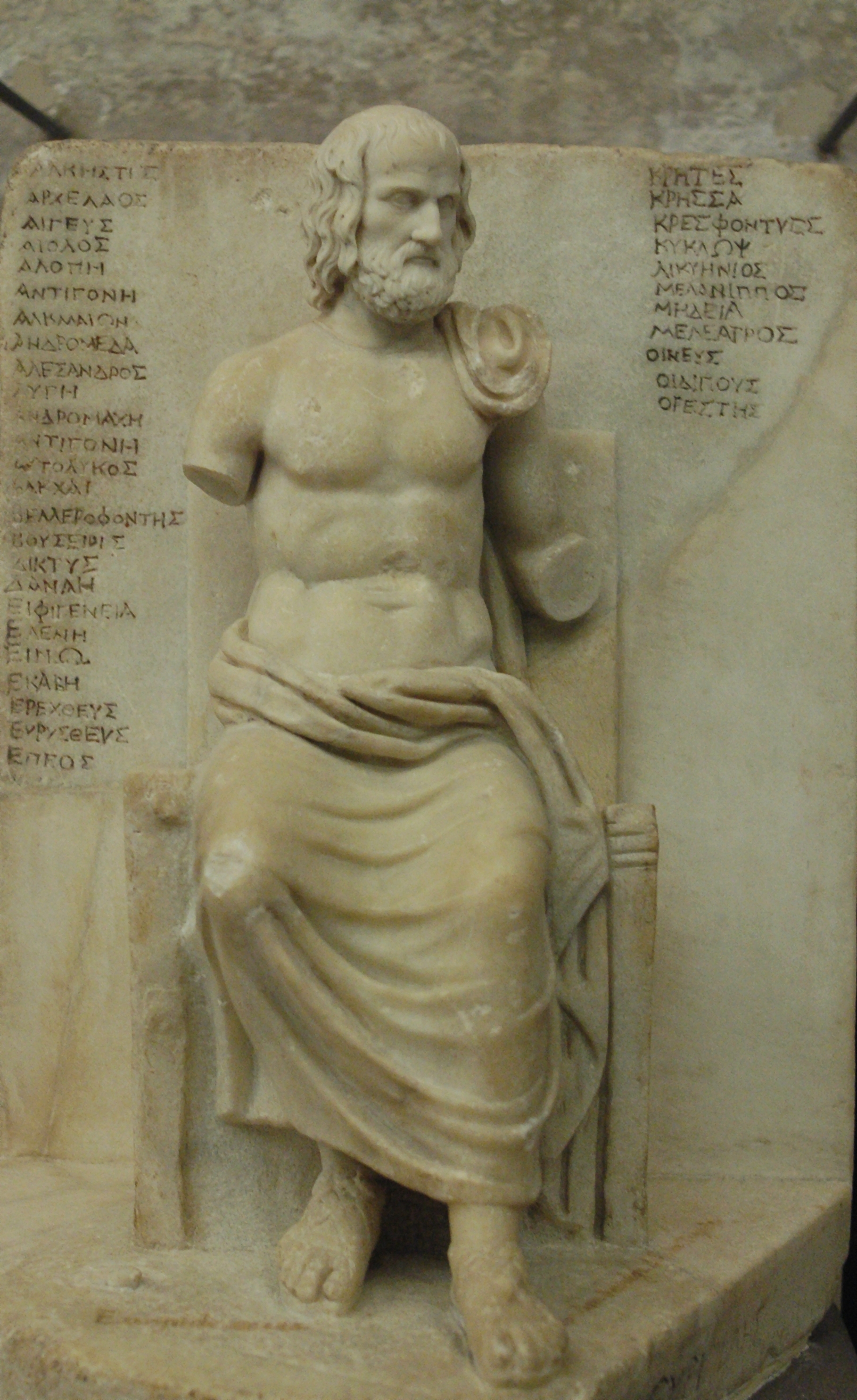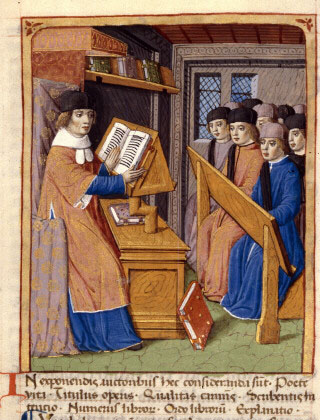|
Eurymedousa
Eurymedousa or Eurymedusa () is a name attributed to several women in Greek mythology. *Eurymedousa, daughter of Cletor or Achelous. Zeus approached and seduced her in the form of an ant. As a result, she gave birth to Myrmidon. *Eurymedousa, an old woman from Apeire and the nanny and attendant of Nausicaa. * According to Cornutus, Eurymedousa was a possible mother of the Charites by Zeus. *Eurymedousa, a daughter of Aetolus and possibly the mother of Oeneus by Porthaon. *Eurymedousa, daughter of Polyxenus, one of the would-be sacrificial victims of Minotaur rescued by Theseus.Servius on ''Aeneid'' 6.21 Notes References * Homer, ''The Odyssey'' with an English Translation by A.T. Murray, PH.D. in two volumes. Cambridge, MA., Harvard University Press; London, William Heinemann, Ltd. 1919. Online version at the Perseus Digital Library. [...More Info...] [...Related Items...] OR: [Wikipedia] [Google] [Baidu] |
Zeus
Zeus (, ) is the chief deity of the List of Greek deities, Greek pantheon. He is a sky father, sky and thunder god in ancient Greek religion and Greek mythology, mythology, who rules as king of the gods on Mount Olympus. Zeus is the child of Cronus and Rhea (mythology), Rhea, the youngest of his siblings to be born, though sometimes reckoned the eldest as the others required disgorging from Cronus's stomach. In most traditions, he is married to Hera, by whom he is usually said to have fathered Ares, Eileithyia, Hebe (mythology), Hebe, and Hephaestus.Hard 2004p. 79 At the oracle of Dodona, his consort was said to be Dione (Titaness/Oceanid), Dione, by whom the ''Iliad'' states that he fathered Aphrodite. According to the ''Theogony'', Zeus's first wife was Metis (mythology), Metis, by whom he had Athena.Hesiod, ''Theogony'886900 Zeus was also infamous for his erotic escapades. These resulted in many divine and heroic offspring, including Apollo, Artemis, Hermes, Persephone, D ... [...More Info...] [...Related Items...] OR: [Wikipedia] [Google] [Baidu] |
Cleitor (mythology)
In Greek mythology, Cleitor or Clitor (Ancient Greek: Κλείτωρ) or Kleitor ''(''Κλήτωρ) may refer to the following personages: * Cleitor, an Arcadian prince as one of the 50 sons of the impious King Lycaon either by the naiad Cyllene, or by Nonacris. He and his brothers were the most nefarious and carefree of all people. To test them, Zeus visited them in the form of a peasant. These brothers mixed the entrails of a child into the god's meal, whereupon the enraged Zeus threw the meal over the table. Cleitor was killed, along with his brothers and their father, by a lightning bolt of the god. *Cleitor, Cletor or Cleitos, the father of Eurymedousa, mother of Myrmidon by Zeus. * Cleitor, in his time, the most powerful of the kings in Arcadia. He was the son of King Azan of Azania but he was childless, therefore he was succeeded by his own cousin, Aepytus, the son of Elatus. Cleitor dwelt in Lycosura and founded a town that bears its name (Cleitor). Pausanias8.4.5 Note ... [...More Info...] [...Related Items...] OR: [Wikipedia] [Google] [Baidu] |
Charites
In Greek mythology, the Charites (; ), singular Charis (), also called the Graces, are goddesses who personify beauty and grace. According to Hesiod, the Charites were Aglaia (Grace), Aglaea, Euphrosyne, and Thalia (Grace), Thalia, who were the daughters of Zeus and Eurynome (Oceanid), Eurynome, the daughter of Oceanus. However in other accounts, their names, number and parentage varied. In Roman mythology they were known as the Gratiae. Hesiod has Aglaea as the wife of Hephaestus, and in the ''Iliad'' Hera promises to give a Charis named Pasithea to Hypnos as bride. Otherwise they have little independent mythology, usually described as attending various gods and goddesses, especially Aphrodite. In Roman and later art, the three Charites are generally depicted nude in an interlaced group, but during the Archaic Greece, Archaic and Classical Greece, Classical periods of Greece, they were typically depicted as fully clothed, and in a line, with dance poses. Parentage, number, and ... [...More Info...] [...Related Items...] OR: [Wikipedia] [Google] [Baidu] |
Sacrificial Victims Of Minotaur
In Greek mythology, the people of Athens were at one point compelled by King Minos of Crete to choose fourteen young noble citizens (seven young men and seven young women) to be offered as sacrificial victims to the half-human, half-taurine monster Minotaur to be killed in retribution for the death of Minos' son Androgeos. Mythology The victims were drawn by lots, were required to go unarmed, and would end up either being consumed by the Minotaur or getting lost and perishing in the Labyrinth, the maze-like structure where the Minotaur was kept. The offerings were to take place every one, seven or nine years and lasted until Theseus volunteered to join the third group of the would-be victims, killed the monster, and led his companions safely out of the Labyrinth. Plutarch in his ''Life of Theseus'' cites a rationalized version of this myth, referring to Philochorus who in his turn claimed to be following a local Cretan tradition. According to it, the young people were not actually ... [...More Info...] [...Related Items...] OR: [Wikipedia] [Google] [Baidu] |
Myrmidon (hero)
In Greek mythology, Myrmidon ( or ; , ''Murmidónos'') was the eponymous ancestor of the Myrmidons in one version of the myth. Family Myrmidon was the son of Zeus and Eurymedusa, daughter of Cleitor (Cletor) or of the river god Achelous. He married Peisidice, daughter of Aeolus and Enarete, and by her became the father of Antiphus and Actor. Also given as his sons were Erysichthon and Dioplethes, father of Perieres, although Erysichthon and Perieres have been ascribed with different parentage. Also, Myrmidon had two daughters: Eupolemeia (mother of the Argonaut Aethalides by Hermes) and Hiscilla (mother of Phorbas by Triopas). Mythology Zeus was said to have approached Eurymedusa in the form of an ant (Greek μύρμηξ, ''myrmēx''), which was where her son's name came from; others say that Myrmex was the name of Eurymedusa's mortal husband, and that it was his shape that Zeus assumed to approach her.Scholia ad Clement of Alexandria, ''Protrepticus'1, p. 426/re ... [...More Info...] [...Related Items...] OR: [Wikipedia] [Google] [Baidu] |
Bibliotheca Teubneriana
The Bibliotheca Teubneriana, or ''Bibliotheca Scriptorum Graecorum et Romanorum Teubneriana'', also known as Teubner editions of Greek and Latin texts, comprise one of the most thorough modern collections published of ancient (and some medieval) Greco-Roman literature. The series consists of critical editions by leading scholars. They now always come with a full critical apparatus on each page, although during the nineteenth century there were ''editiones minores'', published either without critical apparatuses or with abbreviated textual appendices, and ''editiones maiores'', published with a full apparatus. Teubneriana is an abbreviation used to denote mainly a single volume of the series (fully: ''editio Teubneriana''), rarely the whole collection; correspondingly, ''Oxoniensis'' is used with reference to the ''Scriptorum Classicorum Bibliotheca Oxoniensis'', mentioned above as ''Oxford Classical Texts''. The only comparable publishing ventures producing authoritative schol ... [...More Info...] [...Related Items...] OR: [Wikipedia] [Google] [Baidu] |
Ante-Nicene Period
Christianity in the ante-Nicene period was the period in Christian history following the Apostolic Age (1st century AD) up to the First Council of Nicaea (325 AD). Although the use of the term ''Christian'' () is attested in the Acts of the Apostles (80–90 AD), the earliest recorded use of the term ''Christianity'' () is attested by the ante-Nicene Father and theologian Ignatius of Antioch (). The 2nd and 3rd centuries AD saw a sharp separation between Jewish Christianity and the largely gentile forms of Christianity derived from St. Paul. There was an explicit rejection of Second Temple Judaism and Jewish culture by the end of the 2nd century, with a growing body of anti-Jewish Christian literature. While the Jewish–Christian community was centered in Jerusalem in the 1st century AD, Gentile Christianity spread widely in the 2nd century AD. One stream of Gentile Christianity (so-called proto-orthodox Christianity) that emerged in this period in the persons and t ... [...More Info...] [...Related Items...] OR: [Wikipedia] [Google] [Baidu] |
Clementine Literature
The Clementine literature (also referred to as the Clementine Romance or Pseudo-Clementine Writings) is a late antique third-century Christian romance containing an account of the conversion of Clement of Rome to Christianity, his subsequent life and travels with the apostle Peter and an account of how they became traveling companions, Peter's discourses, and finally Clement's family history and eventual reunion with his family. To reflect the pseudonymous nature of the authorship, the author is sometimes referred to as Pseudo-Clement. In all likelihood, the original text went by the name of ''Periodoi Petrou'' ("Circuits of Peter"); sometimes historians refer to it as the "Grundschrift" ("Basic Writing"). Though lost, the original survives in two recensions known as the ''Clementine Homilies'' and the ''Clementine Recognitions''. The overlap between the two has been used to produce a provisional reconstruction of the Circuits of Peter. Respectively, the original titles for these ... [...More Info...] [...Related Items...] OR: [Wikipedia] [Google] [Baidu] |
Euripides
Euripides () was a Greek tragedy, tragedian of classical Athens. Along with Aeschylus and Sophocles, he is one of the three ancient Greek tragedians for whom any plays have survived in full. Some ancient scholars attributed ninety-five plays to him, but the ''Suda'' says it was ninety-two at most. Of these, eighteen or nineteen have survived more or less complete (''Rhesus (play), Rhesus'' is suspect). There are many fragments (some substantial) of most of his other plays. More of his plays have survived intact than those of Aeschylus and Sophocles together, partly because his popularity grew as theirs declinedMoses Hadas, ''Ten Plays by Euripides'', Bantam Classic (2006), Introduction, p. ixhe became, in the Hellenistic Age, a cornerstone of ancient literary education, along with Homer, Demosthenes, and Menander.L.P.E.Parker, ''Euripides: Alcestis'', Oxford University Press (2007), Introduction p. lx Euripides is identified with theatrical innovations that have profoundly influ ... [...More Info...] [...Related Items...] OR: [Wikipedia] [Google] [Baidu] |
Aeneid
The ''Aeneid'' ( ; or ) is a Latin Epic poetry, epic poem that tells the legendary story of Aeneas, a Troy, Trojan who fled the Trojan War#Sack of Troy, fall of Troy and travelled to Italy, where he became the ancestor of the Ancient Rome, Romans. Written by the Roman poet Virgil between 29 and 19 BC, the ''Aeneid'' comprises 9,896 lines in dactylic hexameter. The first six of the poem's twelve books tell the story of Aeneas' wanderings from Troy to Italy, and the poem's second half tells of the Trojans' ultimately victorious war upon the Latins (Italic tribe), Latins, under whose name Aeneas and his Trojan followers are destined to be subsumed. The hero Aeneas was already known to Greco-Roman legend and myth, having been a character in the ''Iliad''. Virgil took the disconnected tales of Aeneas' wanderings, his vague association with the foundation of Ancient Rome, Rome and his description as a personage of no fixed characteristics other than a scrupulous ''pietas'', ... [...More Info...] [...Related Items...] OR: [Wikipedia] [Google] [Baidu] |
Maurus Servius Honoratus
Servius, distinguished as Servius the Grammarian ( or ), was a late fourth-century and early fifth-century grammarian. He earned a contemporary reputation as the most learned man of his generation in Italy; he authored a set of commentaries on the works of Virgil. These works, ("Exposition on Three Works of Virgil"), ("Commentaries on Virgil"), ("Commentaries on the Works of Vergil"), or ("Commentaries on the Poems of Virgil"), constituted the first incunable to be printed at Florence, by Bernardo Cennini, in 1471. In the ''Saturnalia'' of Macrobius, Servius appears as one of the interlocutors; allusions in that work and a letter from Symmachus to Servius indicate that he was not a convert to Christianity. Name The name Servius also appears as Seruius owing to the unity of the Latin letters V and U from antiquity until as late as the 18th century. Many medieval manuscripts of Servius's commentaries give him the praenomen Marius or Maurus and the cognomen Honoratu ... [...More Info...] [...Related Items...] OR: [Wikipedia] [Google] [Baidu] |
Theseus
Theseus (, ; ) was a divine hero in Greek mythology, famous for slaying the Minotaur. The myths surrounding Theseus, his journeys, exploits, and friends, have provided material for storytelling throughout the ages. Theseus is sometimes described as the son of Aegeus, king of Athens, and sometimes as the son of the god Poseidon. He is raised by his mother, Aethra (mother of Theseus), Aethra, and upon discovering his connection to Aegeus, travels overland to Athens, having many adventures on the way. When he reaches Athens, he finds that Aegeus is married to Medea (formerly wife of Jason), who plots against him. The most famous legend about Theseus is his slaying of the Minotaur, half man and half bull. He then goes on to unite Attica under Athenian rule: the ''synoikismos'' ('dwelling together'). As the unifying king, he is credited with building a palace on the fortress of the Acropolis. Pausanias (geographer), Pausanias reports that after ''synoikismos'', Theseus establishe ... [...More Info...] [...Related Items...] OR: [Wikipedia] [Google] [Baidu] |






